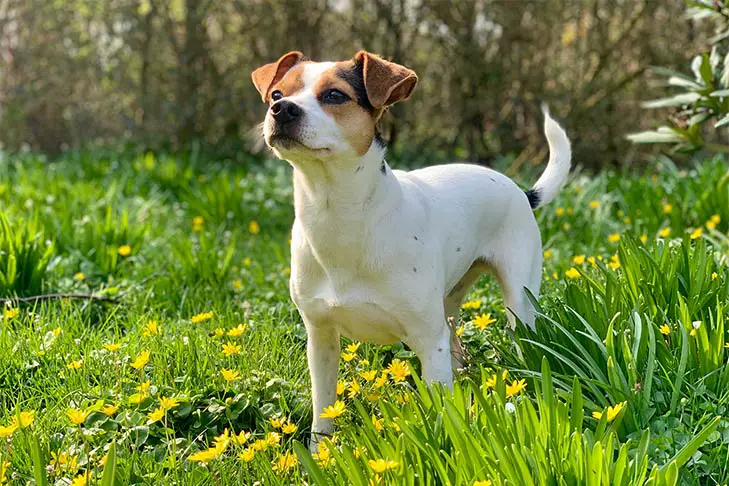The Danish-Swedish Farmdog, also referred to as the Little Big Dog, is a companion dog that enjoys a challenge and works hard. Small, compact, and rather rectangular in shape, they are known for maturing slowly. They are allowed to participate in AKC FSS Open Shows, Agility, Barn Hunt, Flyball, Herding, Lure Coursing, Nosework, Obedience and Rally, and Tracking.
Danish-Swedish Farmdog
Average sizes and life
expectancy of the breed.
Height
12.5-14.5 inches
Weight
15-20 pounds
Life Expectancy
11-13 years
Breed Traits & Characteristics
About the Breed

Owning a dog is not just a privilege; it’s a responsibility. They depend on us for, at minimum, food and shelter, and deserve much more. When you take a dog into your life, you need to understand the commitment that dog ownership entails.
 Health
Health
 Grooming
Grooming
 Exercise
Exercise
 Training
Training
 Nutrition
Nutrition
History
The little farmer’s dog, formerly known as the Danish Pincher, used to be an inherent aspect of Danish rural life until a few decades ago. Numerous daily duties were performed by the Danish-Swedish Farmdog, including those of a mouser/ratter, cattle herder, hunting dog, watchdog, and family member. Smaller family farms and the devoted working farmdog have both become more rare as lives have evolved. The Danish-Swedish Farmdog’s first breed standard was published in 1987 as the result of years of work by the Danish and Swedish Kennel Clubs to revive this breed. In order to launch the country’s first formal breeding program, a DSF was imported in 1998. The breed’s FCI Standard was formally released on March 26, 2009.


